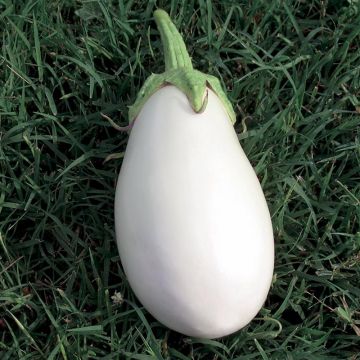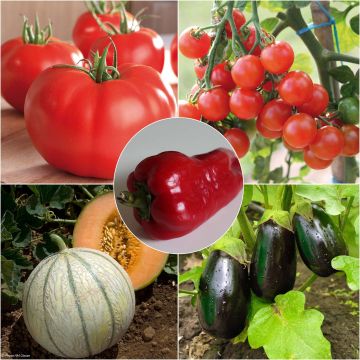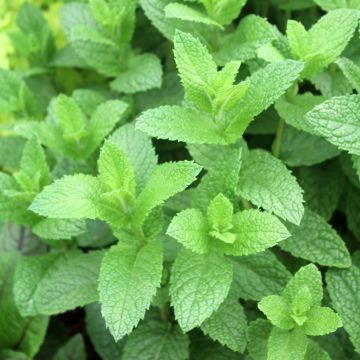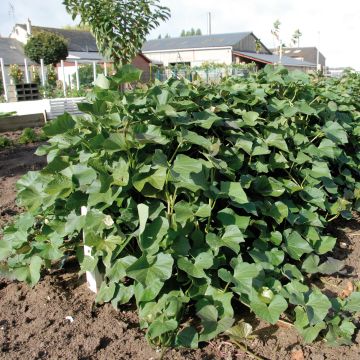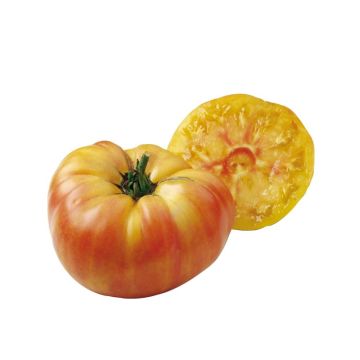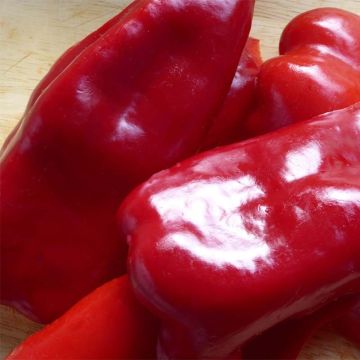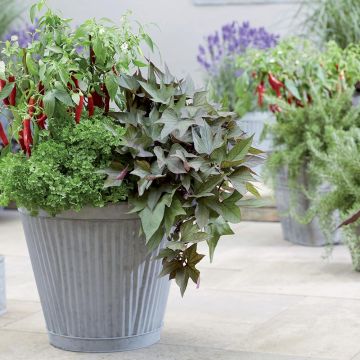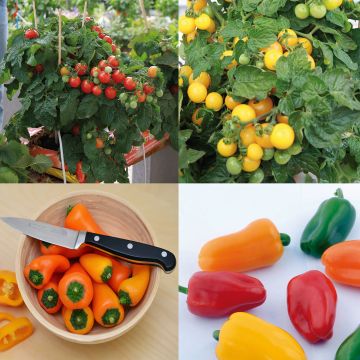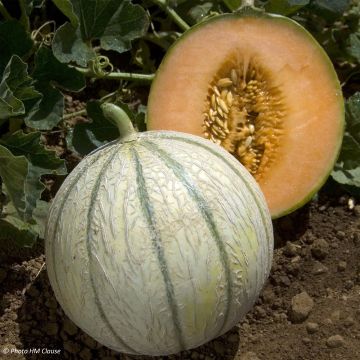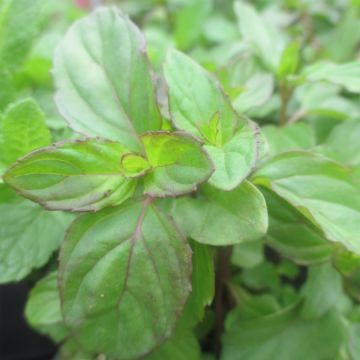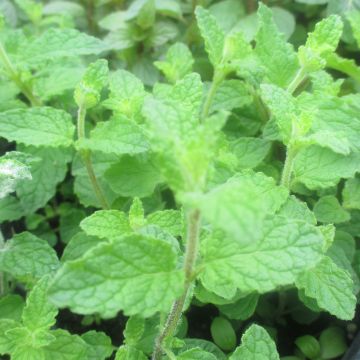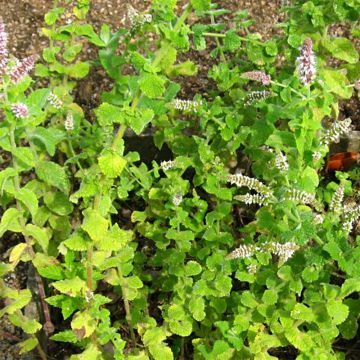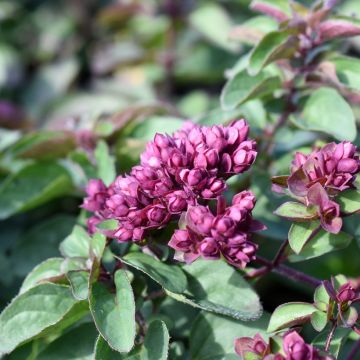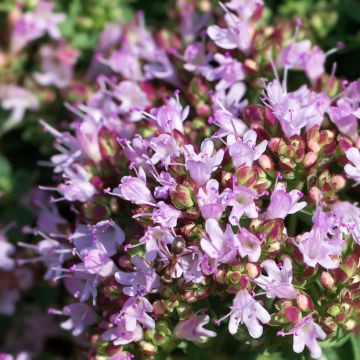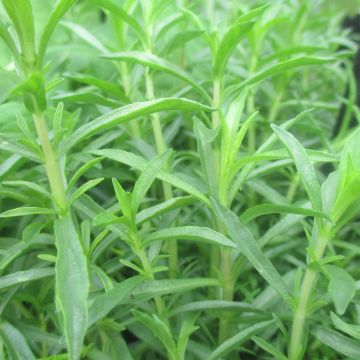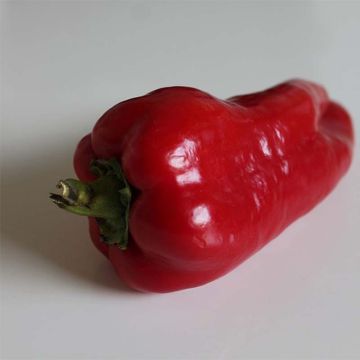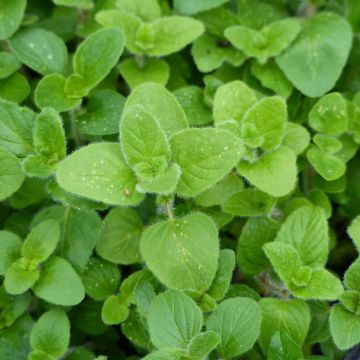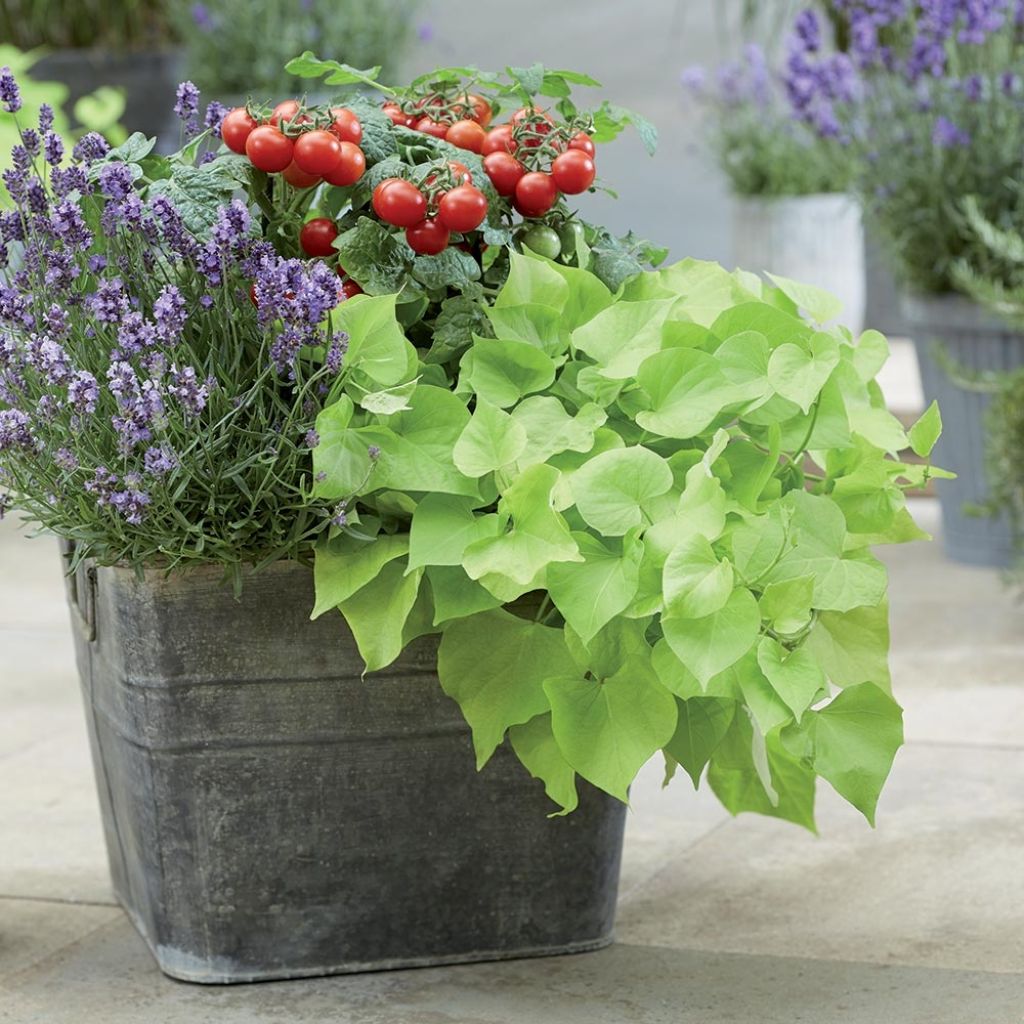

Patate douce Paradise Makatea en mini-motte - Ipomoea batatas
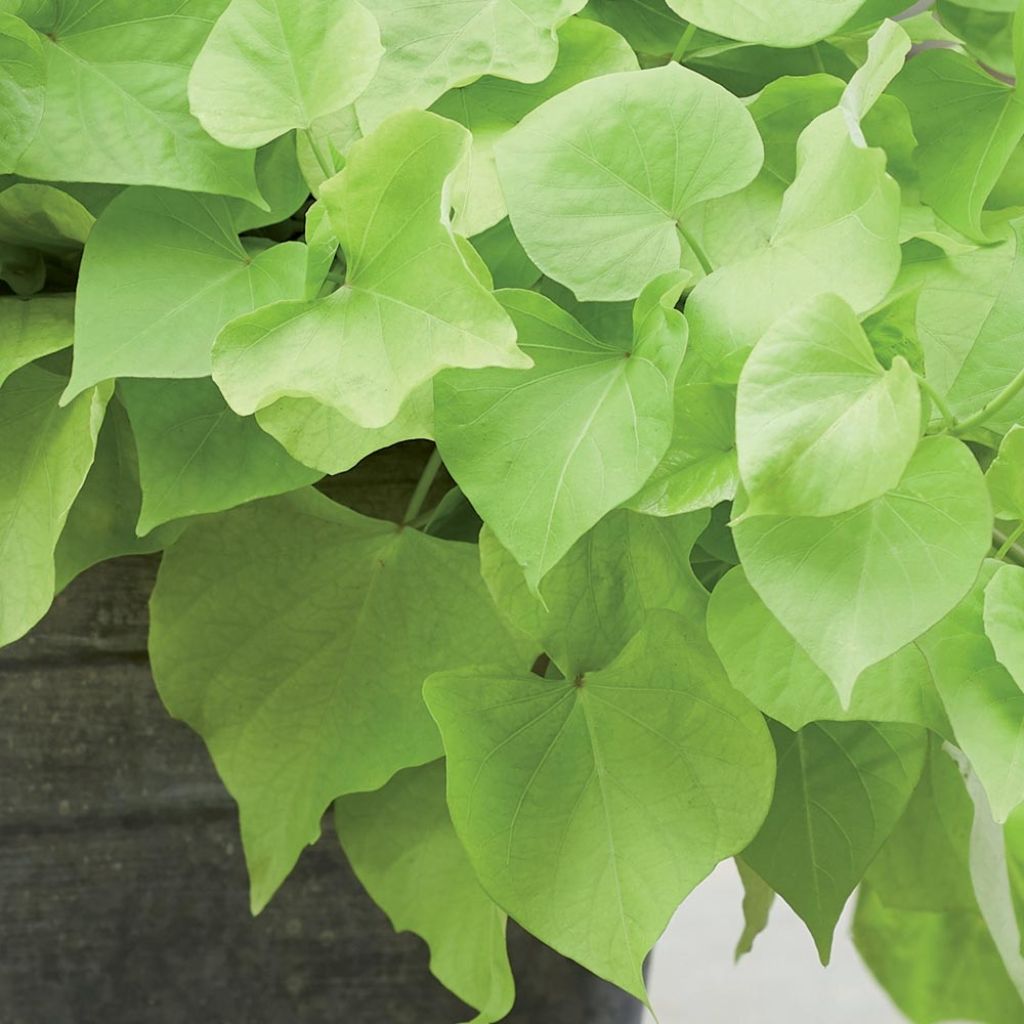

Patate douce Paradise Makatea en mini-motte - Ipomoea batatas
Sweet Potato Paradise Makatea - Ipomoea batatas
Ipomoea batatas Paradise Makatea
Sweet Potato, Yam
The purple sweet potatoes are fine; the 2 green ones arrived already stunted, so I replanted them in a flowerpot. Since then, the purple ones seem to be doing well, one of the green ones hasn't budged, and the second one died. Can you replace them for me? The rest seems to be doing fine.
Marta, 25/04/2023
This item cannot be shipped to the selected country
Delivery charge from €5.90
More information
Schedule delivery date,
and select date in basket
This plant carries a 6 months recovery warranty
More information
We guarantee the quality of our plants for a full growing cycle, and will replace at our expense any plant that fails to recover under normal climatic and planting conditions.
From €5.90 for pickup delivery and €6.90 for home delivery
Express home delivery from €8.90.

Description
Ipomoea batatas 'Paradise Makatea' is part of a new unique series called "Paradise", combining ornamental foliage with edible tuber production. It is the result of extensive research conducted at Louisiana State University (LSU), a specialist in sweet potato hybridisation. Five new varieties have been created, including 'Makatea', which has beautiful heart-shaped chartreuse-green leaves and produces edible tubers with white to yellow flesh. This stunning plant has a low, spreading, and semi-trailing habit. It is perfect for decorating patios and balconies. Plant the plugs from April to June, after the last frosts. It works well in open ground, under cover, or in a pot, depending on the climate. Harvesting takes place from September to November.
Reaching only about 20cm (8in) tall, this perennial plant can spread up to 1.5m (5ft) wide in the ground with its long trailing stems. When grown in a pot, it will form a more modest clump, approximately 80cm (32in) wide. It belongs to the Convolvulaceae family and the Ipomoea genus. 'Makatea' develops highly decorative foliage. The leaves are large, heart-shaped, and have a yellowish-green colour that is very bright. This plant does not flower. It produces elongated tubers covered with light pinkish-salmon skin, which protects firm pale flesh that is rich in starch and sugars. This exotic plant needs warmth and water to thrive. It can be planted in open ground in regions with hot summers. In cooler regions, grow it under cover or in pots.
On the balcony or terrace, 'Makatea' sweet potato can be used in floral compositions, in containers, flower beds, or hanging baskets. Pair it with blue lobelias and a bright pink geranium, for example. It will create unique annual ground cover and border plants, forming a lace-like backdrop for taller perennials. The foliage looks its best when the plant is partially shaded in the afternoon.
In terms of cooking, sweet potatoes can be prepared like regular potatoes (mashed, gratins, soups, sautéed, etc.). Their sweet taste also makes them suitable for use in desserts such as cakes, pies, and jams. The edible leaves can be consumed like spinach. Sweet potatoes are rich in beta-carotene, vitamin B6, and minerals (copper and manganese).
Harvesting: sweet potatoes are short-day plants. Tuber formation begins in September-October when the foliage turns yellow. Cut the foliage just before harvesting. Gently dig up the tubers with a garden fork, taking care not to damage them. Let them dry in the sun for a few hours. Harvesting should be completed before the first frosts.
Storage: sweet potatoes can be stored like regular potatoes. Keep them in a cool, dry place away from light.
Gardening tip: although the plant provides ground cover, mulch the soil to keep it moist and reduce weed growth, especially at the beginning of cultivation.
Please be aware that our young plug plants are professional products intended for experienced gardeners. Upon receipt, transplant and store them under cover (veranda, greenhouse, cold frame) at a temperature above 14°C (57.2°F) for a few weeks before planting outdoors once the risk of frost has passed.
Report an error about the product description
Sweet Potato Paradise Makatea - Ipomoea batatas in pictures
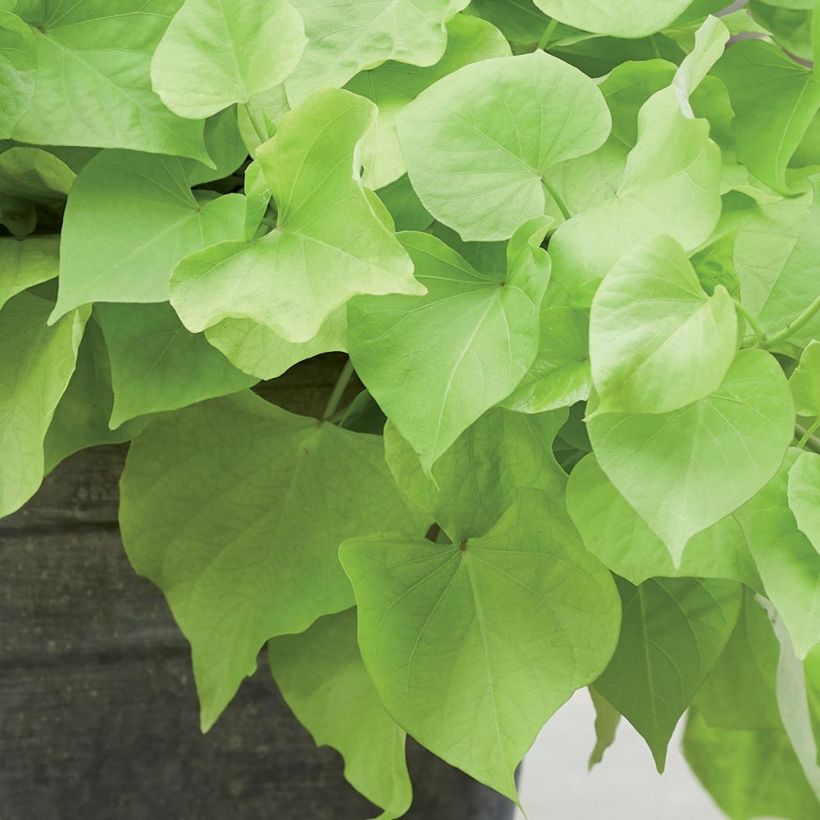

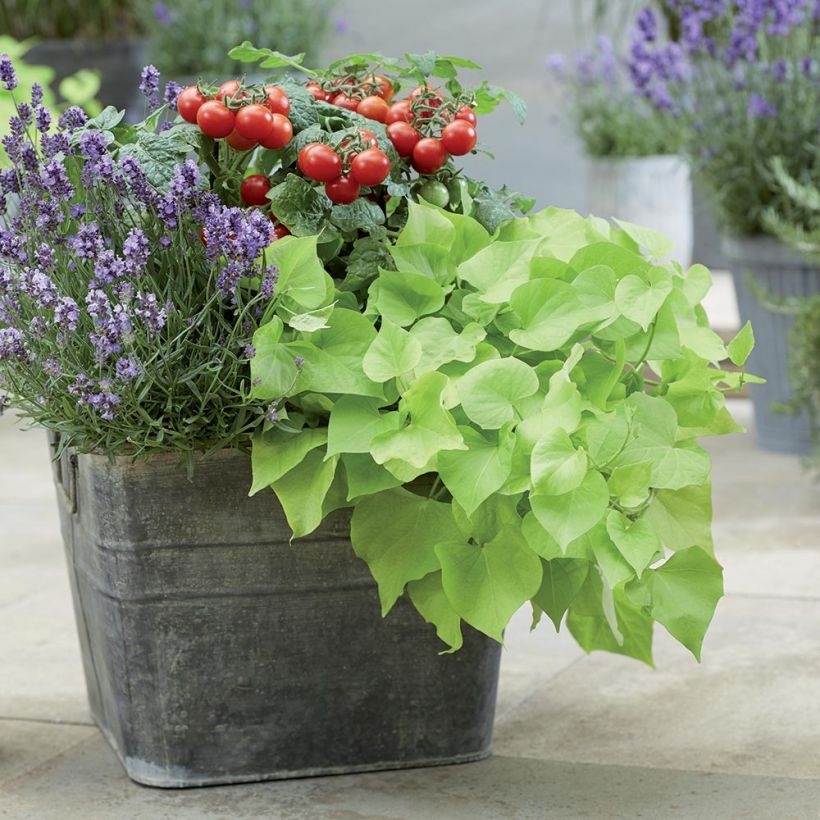

Harvest
Plant habit
Foliage
Other Vegetable plants A to Z
Planting and care
Sweet potato cultivation requires average temperatures above 20°C (68°F), ideally around 25°C (77°F). Sweet potatoes can be planted directly in the ground if summers are warm, with regular watering. For cooler regions, grow in a greenhouse (heated if necessary) or a container.
Grow the plug plants by transplanting them into trays or pots with a diameter of 8 to 13cm (3 to 5in), filled with compost. Place them in a warm and bright location. Water regularly.
In the ground and in a greenhouse
Transplanting in the ground in sunny regions takes place around mid-May, when the risk of frost is eliminated and the soil is sufficiently warmed.
Sweet potatoes thrive in most types of soil, with a preference for loose, slightly sandy, well-drained, and fertile soil. Choose a very sunny location. Prepare a large planting area as sweet potatoes develop long creeping vines. Apply well-rotted compost in the previous autumn. Loosen the soil deeply. Space the rows 90cm (35in) apart. Mound up the soil along the entire row to form a 15cm (6in) high ridge. Flatten the top and position the young plants every 30cm (12in). Hill up the plants when the vines are well developed. Water very regularly. In our regions, sweet potatoes are grown as annuals. Beware of attacks from voles and wireworms.
In a container
Transplant into pots with a diameter of at least 30cm (12in), filled with a mix of compost and garden soil. Place the pots in full sun. Water regularly. Hill up the plants by adding compost. This will result in a beautiful plant. A small harvest will be possible in the same autumn, although it will be limited.
Cultivation
Care
Intended location
-
, onOrder confirmed
Reply from on Promesse de fleurs
Vegetable plants
Haven't found what you were looking for?
Hardiness is the lowest winter temperature a plant can endure without suffering serious damage or even dying. However, hardiness is affected by location (a sheltered area, such as a patio), protection (winter cover) and soil type (hardiness is improved by well-drained soil).

Photo Sharing Terms & Conditions
In order to encourage gardeners to interact and share their experiences, Promesse de fleurs offers various media enabling content to be uploaded onto its Site - in particular via the ‘Photo sharing’ module.
The User agrees to refrain from:
- Posting any content that is illegal, prejudicial, insulting, racist, inciteful to hatred, revisionist, contrary to public decency, that infringes on privacy or on the privacy rights of third parties, in particular the publicity rights of persons and goods, intellectual property rights, or the right to privacy.
- Submitting content on behalf of a third party;
- Impersonate the identity of a third party and/or publish any personal information about a third party;
In general, the User undertakes to refrain from any unethical behaviour.
All Content (in particular text, comments, files, images, photos, videos, creative works, etc.), which may be subject to property or intellectual property rights, image or other private rights, shall remain the property of the User, subject to the limited rights granted by the terms of the licence granted by Promesse de fleurs as stated below. Users are at liberty to publish or not to publish such Content on the Site, notably via the ‘Photo Sharing’ facility, and accept that this Content shall be made public and freely accessible, notably on the Internet.
Users further acknowledge, undertake to have ,and guarantee that they hold all necessary rights and permissions to publish such material on the Site, in particular with regard to the legislation in force pertaining to any privacy, property, intellectual property, image, or contractual rights, or rights of any other nature. By publishing such Content on the Site, Users acknowledge accepting full liability as publishers of the Content within the meaning of the law, and grant Promesse de fleurs, free of charge, an inclusive, worldwide licence for the said Content for the entire duration of its publication, including all reproduction, representation, up/downloading, displaying, performing, transmission, and storage rights.
Users also grant permission for their name to be linked to the Content and accept that this link may not always be made available.
By engaging in posting material, Users consent to their Content becoming automatically accessible on the Internet, in particular on other sites and/or blogs and/or web pages of the Promesse de fleurs site, including in particular social pages and the Promesse de fleurs catalogue.
Users may secure the removal of entrusted content free of charge by issuing a simple request via our contact form.
The flowering period indicated on our website applies to countries and regions located in USDA zone 8 (France, the United Kingdom, Ireland, the Netherlands, etc.)
It will vary according to where you live:
- In zones 9 to 10 (Italy, Spain, Greece, etc.), flowering will occur about 2 to 4 weeks earlier.
- In zones 6 to 7 (Germany, Poland, Slovenia, and lower mountainous regions), flowering will be delayed by 2 to 3 weeks.
- In zone 5 (Central Europe, Scandinavia), blooming will be delayed by 3 to 5 weeks.
In temperate climates, pruning of spring-flowering shrubs (forsythia, spireas, etc.) should be done just after flowering.
Pruning of summer-flowering shrubs (Indian Lilac, Perovskia, etc.) can be done in winter or spring.
In cold regions as well as with frost-sensitive plants, avoid pruning too early when severe frosts may still occur.
The planting period indicated on our website applies to countries and regions located in USDA zone 8 (France, United Kingdom, Ireland, Netherlands).
It will vary according to where you live:
- In Mediterranean zones (Marseille, Madrid, Milan, etc.), autumn and winter are the best planting periods.
- In continental zones (Strasbourg, Munich, Vienna, etc.), delay planting by 2 to 3 weeks in spring and bring it forward by 2 to 4 weeks in autumn.
- In mountainous regions (the Alps, Pyrenees, Carpathians, etc.), it is best to plant in late spring (May-June) or late summer (August-September).
The harvesting period indicated on our website applies to countries and regions in USDA zone 8 (France, England, Ireland, the Netherlands).
In colder areas (Scandinavia, Poland, Austria...) fruit and vegetable harvests are likely to be delayed by 3-4 weeks.
In warmer areas (Italy, Spain, Greece, etc.), harvesting will probably take place earlier, depending on weather conditions.
The sowing periods indicated on our website apply to countries and regions within USDA Zone 8 (France, UK, Ireland, Netherlands).
In colder areas (Scandinavia, Poland, Austria...), delay any outdoor sowing by 3-4 weeks, or sow under glass.
In warmer climes (Italy, Spain, Greece, etc.), bring outdoor sowing forward by a few weeks.

































